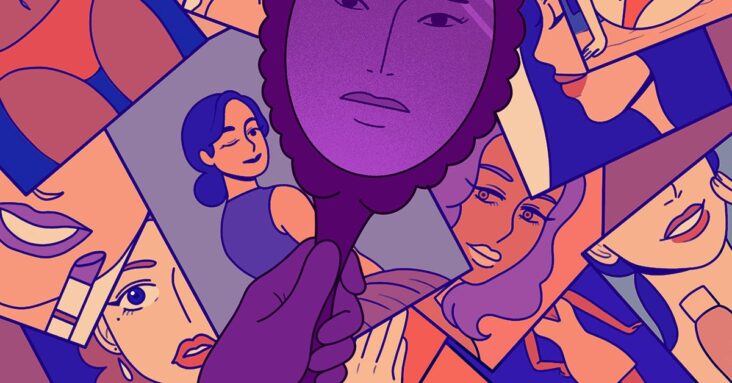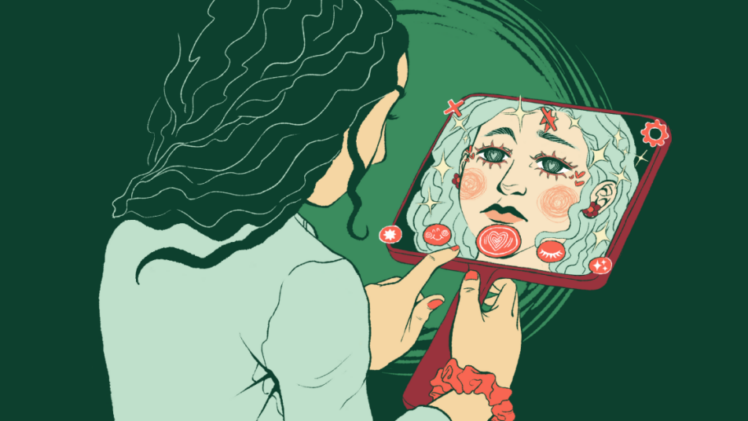The influence of movies on our perception of beauty is undeniable. From glossy Hollywood blockbusters to independent films, the silver screen often sets the stage for showcasing unattainable beauty ideals.
Women, in particular, are subjected to unrealistic standards of physical attractiveness perpetuated by the characters they see on screen. But behind the allure and glamor lies a dark side with dangerous consequences.
This article delves into the dangerous consequences of unrealistic beauty ideals portrayed in movies, specifically focusing on the harmful treatments women seek to conform to these ideals and the repercussions they face.
Rise of Eating Disorders

Source: ctvnews.ca
According to the World Health Organization (WHO), eating disorders like anorexia nervosa and bulimia nervosa typically manifest during adolescence and young adulthood. These disorders are characterized by abnormal eating patterns and an intense preoccupation with food, often accompanied by distressing concerns about body weight and shape.
Anorexia nervosa, in particular, can have severe consequences, including a higher mortality rate compared to any other mental disorder. Premature death, often resulting from medical complications or suicide, is a significant risk associated with anorexia nervosa.
Unrealistic beauty ideals portrayed in movies play a significant role in the development of eating disorders. The relentless pursuit of an unattainable, ultra-thin body depicted on the silver screen leads many women to engage in extreme dieting and self-destructive behaviors.
The consequences are profound, both physically and psychologically. These disorders result in severe malnutrition, leading to weakened immune systems, organ damage, and the potential for long-term health complications.
Moreover, the mental health implications are equally devastating, with individuals battling low self-esteem, distorted body image, anxiety, and depression. The toll of eating disorders, fostered by unrealistic beauty standards in movies, cannot be underestimated.
Inclination Toward Cosmetic Surgery
Unrealistic beauty standards perpetuated by movies have a profound influence on women’s inclination toward cosmetic surgery. According to the International Society of Aesthetic Plastic Surgery (ISAPS), there has been a significant 19.3% overall increase in plastic surgery procedures in 2021. The data reveals that more than 12.8 million surgical procedures and 17.5 million non-surgical procedures were performed worldwide.
The five most popular surgical procedures include liposuction, breast augmentation, rhinoplasty, eyelid surgery, and abdominoplasty. These figures demonstrate the enduring popularity and demand for aesthetic enhancements.
However, it is essential to acknowledge the risks and potential complications associated with such surgeries. Infections, scarring, and dissatisfaction with the results are some of the common pitfalls.
Additionally, the psychological impact cannot be overlooked. Pursuing surgical alteration to meet unrealistic beauty standards can lead to body dysmorphia, identity issues, and an unhealthy obsession with appearance.
Obsession With Skin Lightening Treatments
Movies have played a significant role in perpetuating an obsession with fair skin, particularly among women. This societal fixation has led to the widespread use of skin-lightening treatments.
But it is crucial to examine the harmful consequences associated with such practices. Many skin-lightening creams contain ingredients like hydroquinone or mercury, which can have detrimental effects on the skin and overall health.
According to Allure, the phrases “skin lightening” and “skin whitening” have frequently been used interchangeably in discussions regarding skin-bleaching products. It’s essential to note that these products, which are not approved for over-the-counter sale in the US, differ significantly from conventional skin-brightening products that contain ingredients like vitamin C known for promoting a healthy glow.
The FDA strictly prohibits the inclusion of mercury in drugs or cosmetics, except in rare instances where no other safe and effective preservatives are available.
Prolonged use of these treatments can result in skin damage, including thinning, discoloration, and increased vulnerability to UV radiation. Also, potential risks include hyperpigmentation, paradoxical darkening of the skin, and systemic toxicity.
The Popularity of Hair Relaxing Treatments

Source:pinterest.com
Hair relaxing treatments have gained popularity among women seeking to achieve straight, smooth hair, often influenced by the beauty standards depicted in movies. However, it is essential to recognize the potential risks associated with these treatments.
According to TorHoerman Law, recent scientific research indicates that the use of chemical-based hair straightening products, hair relaxers, and other hair care items has been associated with a heightened susceptibility to health complications such as uterine cancer, endometrial cancer, breast cancer, and various other ailments.
The ongoing hair relaxer lawsuit highlights the connection between hair relaxer use and uterine cancer. These lawsuits aim to raise awareness, hold manufacturers accountable, and advocate for safer alternatives in the beauty industry.
Excessive Exercise and Dieting
Women are frequently bombarded with images of slim and toned bodies, leading to a pervasive belief that extreme measures are necessary to attain such ideals. However, the consequences of excessive exercise and dieting can be severe.
Physically, individuals may experience overuse injuries, hormonal imbalances, and compromised immune systems due to inadequate nutrition. The pressure to conform to societal expectations of beauty can push individuals to the brink.
It becomes necessary to shift towards promoting a balanced, sustainable approach to fitness and nutrition, prioritizing overall health and well-being over unrealistic appearances.
Implications for the Mental Health
The impact of unrealistic beauty ideals depicted in movies extends beyond physical consequences and permeates the realm of mental health. Constant exposure to unattainable standards of beauty can profoundly affect women’s mental well-being.
The relentless pursuit of these ideals often leads to low self-esteem, body dissatisfaction, and a distorted body image. Women may develop body dysmorphia, experiencing an obsessive preoccupation with perceived flaws and constant comparison to media portrayals.
Anxiety, depression, and other mood disorders are also prevalent among those who internalize unrealistic beauty standards. The toll on mental health is significant and requires a collective effort to promote body positivity, self-acceptance, and the celebration of diverse forms of beauty.
Conclusion

Source: buzzfeed.com
The impact of unrealistic beauty ideals portrayed in films cannot be underestimated. Challenging these unattainable standards and advocating for body positivity, self-acceptance, and diverse representations of beauty in the media is essential.
Responsible and inclusive filmmaking that promotes authentic and healthy body images is crucial for fostering a society that values individuality and prioritizes the well-being of individuals over conforming to unrealistic ideals.






